THIS CRAZY DAY IN 1972: All mobbed up and no place to go
October 9-15, 1972
To access all website contents, click HERE.
Why do we run this separate item peeking into newspapers from 1972? Because 1972 is part of the ancient times when everybody read a paper. Everybody, everybody, everybody. Even kids. So Steve Bertolucci, the 10-year-old hero of the novel serialized at this Substack, read the paper too—sometimes just to have something to do. These are some of the stories he read. Follow THIS CRAZY DAY on Twitter: @RoselandChi1972.
FYI: Just when you think the Chicago mob stories are over, they pull you back in. The mob stories start October 12. You can scroll there first, but if you do, you’ll be miss the Bears, some great Joe Mantegna, Gladys Knight & the Pips, a bikini, dueling ads in the Defender, and more. You choose!
October 9, 1972
Chicago Daily News
by Ray Sons, Sports Editor
“GREEN BAY, Wis.—Willie Holman left Lambeau Field on crutches Sunday night, after the Bears had lost to Green Bay, 20-17,” writes Ray Sons.
“And there went whatever was left of the Bear pass rush.”
“Holman, a veteran end, was the sole survivor of the 1971 Bear defensive line, which occasionally sacked a passer. The 1972 Bear front four has nailed a passer only once in four games, and then with the help of a safety blitz.
“Sunday, they let Scott Hunter, one of the National Football League’s very ordinary passers, go unmolested all afternoon and pass for 240 yards.
“It was Hunter’s unhurried passing to wide-open receivers that moved the ball into position for Chester Marcol’s winning 37-yard field goal with 30 seconds to be played.”
Poor Abe Gibron. Here he goes nuts over a ruling against the Bears. Later, he had to admit the ref was right after watching the tape—a process that took a long time in 1972.
Chicago Tribune
by.
by Cooper Rollow, Sports Editor
“GREEN BAY, Wis., Oct. 8—These are the times that try Abe Gibron’s soul,” writes Rollow, getting in an obligatory sports military reference. “His Bears played their fourth game under his leadership today. They have never played better during this still young 1972 season, and yet they are still looking for their first victory.
“They lost 20-17 to the Green Bay Packers on a 37-yard field goal by Chester Marcol—with 30 seconds left—after giving up two touchdowns on a fumble and a fluke play which long will be talked about.”
That fluke play: I liked the Sun-Times’ Jack Griffin’s description best, so I’ll insert it here:
“The touchdown that stabbed the Bears the deepest was the second-quarter pass that looked more like a volleyball maneuver, but will show in the book as a 48-yard touchdown between Scott Hunter and Jon Staggers.
“Staggers wasn’t the intended receiver. Dave Davis was, and the Bears seemed safely removed from danger because the Packers had just been rapped for offensive pass interference.
“[Bear Joe] Taylor had Davis covered all the way and swatted the ball away. But Staggers came shooting out of nowhere, took the ball off his shoe tops, rolled in one somersault and then plunged into the end zone.
“There could be no argument against the official’s call. If Davis had deflected the ball Staggers would not have been eligible to take it. But it was Taylor who knocked it away, and that made everybody eligible.”
Chicago Sun-Times
by Jack Griffin
“GREEN BAY, Wis.—It’s a small room the coaches share in the visitors’ quarters, and Abe Gibron sat there, the bitter taste of defeat again on his tongue,” writes Today’s Jack Griffin.
“‘Don’t tell me we played a nice game,’ he said. ‘Nice game is for losers. But don’t write this team off. Just don’t write this team off.’”
Even after Packer rookie Chester Marcol’s 37-yard field goal to pull ahead with 30 seconds left, writes Griffin, the Bears “wouldn’t quit, because defeat had become too permanent a thing with the Bears, and they kept on trying. And they got Mac Percival within 51 yards of the field goal with five seconds left. But even with a 20 m.p.h. wind at this back he couldn’t reach it.”
Bottomline: “Even when they were doing everything right, it turned out wrong.”
Chicago Today
“Hurrah for the Chicago Bears. They’re now 2-2. They’ve beaten the spread twice,” writes Today’s Rick Talley, whose thoughts include a handy brief look at the season so far.
“Other random thoughts after watching Our Monsters put their show on TV, where many fans got their first look at the 1972 product:”
Note: Remember, NFL home games are still usually blacked-out, though that may change if President Nixon has something to say about it.
“—Camp Campaneris throws a bat a lot like Bobby Douglas throws a football. High and above the target.”
Note: Talley refers to Oakland’s Bert Campaneris, suspended on Sunday from the rest of the American League play-offs and fined $500 after throwing his bat at Detroit pitcher Lerrin Lagrow.
Lagrow had hit Campy in the ankle with a fastball in the seventh inning, as the A’s sailed to a 5-0 win. The suspension meant little. Campy was going to miss the rest of the play-offs anyway due to the sore ankle.

Back to the Bears:
“—The Bears lost by only three points yesterday to the team [the Packers] that just might win the National Football League Central Division.”
“—What do you tell Bear players now? Go put together the pieces of something that was never together in the first place? A quickie review of the first four Bear games gives you this:
“—They fumbled away any chance of victory against Atlanta [37-21].
“—The defense was noteworthy but the offense wasn’t much as they surprised Los Angeles with a 13-13 tie.
“—The offense was noteworthy. but the defense wasn’t much as they blamed the officials and lost to Detroit, 38-24.
“—Yesterday, with the score tied, 17-17, in the fourth period, with the wind at their back, the Bears’ offense met the challenge by running three line plays for nine yards and punting.
“—The Packers then responded by taking to the air [six passes in 10 plays] and winning the game with a Polish field goal.”
For Younger Readers: In 1972, denigration of Polish Americans was just business as usual, in real life as much as in “All in the Family.” Anytime someone put the word “Polish” in front of X, it meant “a stupid/weird version of X.”
But Rick Talley still thinks Abe Gibron is a good coach, and says every Bear he’s talked to agrees.
“Yet, Chicago remains one of three winless teams in pro football,” he writes, “and with each loss, the pressure will mount.”
October 9, 1972
Chicago Daily Defender
Bank ads dominate the advertising in the major dailies—it’s especially noticeable in the major dailies where they tend to be full-page ads. The Defender has fewer bank ads, but fewer ads overall as it’s a smaller publication—I have no idea how the percentages compare. At some point next year we’ll look at these bank ads all together in one post.
These ads from Illinois Federal Savings and Loan caught my eye because they just started running. Illinois Federal is running two ads of about 1/3 page many issues this week. I thought the first ad was some kind of fast food prize offer or something at first. But it turns out to be a free gift—a warming tray—and this is a very 1972 thing. Banks used to do a lot of give-aways, especially savings and loans.
Another reason I took note of this ad: Anyone who drives on King Drive knows this building. I’m not a big modern architecture fan, but I dig it—how can you not? It’s now GN Bank, but Google Streetview shows it was still Illinois Service-Federal Savings through 2018.
BANK HISTORY HERE
October 9, 1972
Chicago Today: Continental Airlines “The Los Angeles Expressway” ad
This is an ad campaign that’s been going on for some time now, giving this cartoonist a lot of work because Continental continually comes up with different gimmicks for their “Los Angeles Expressway” flights—six nonstops a day to LA. Since they don’t bother specifying, we can assume it leaves from O’Hare.
Continental Airlines wants Chicagoans to go to LA very badly. Just how badly, you will see in a few weeks as this ad campaign takes an unusual turn. You’ll know which one I mean when you see it.
October 9, 1972
Chicago Daily Defender
The producers of Godspell either already have or really want a good share of Black audience members, because there are plenty of theater shows in Chicago, but it’s Godspell that runs a daily display ad in the Defender.
And today, the Defender also runs the picture below of the local Godspell cast. No idea why I bothered scanning the caption, but it turns out Joe Mantegna is in there!
Only now do I see via Wikipedia that Joe Mantegna started on the stage here in “Hair” in 1969, the same year he graduated from the Goodman School of Drama, then at the Art Institute, now at DePaul. Later, of course, would come his Tony and Jeff awards for the role of Richard Roma in David Mamet’s “Glengarry Glen Ross.”
Mantegna’s career is too long and varied, his awards too numerous, to detail here. The important thing is, he was born in Chicago.
He’s also a Superfan.
I picked up this clip quickly off YouTube to satisfy Criminal Law fans, and then clicked on it—and could not stop watching Jason Alexander as, I assume, a serial killer. I literally could not stop watching, and Jason Alexander has nothing to do with Chicago or 1972.
October 9, 1972
Chicago Today
In case you forgot there’s a presidential election coming up.
October 9, 1972
Chicago Today
October 10, 1972
Chicago Daily Defender: Letter to the editor re Willie Lee Browner
Chicagoans read about the fatal police shooting of Willie Lee Browner in the Tribune and Daily News on September 25. After a rash of robberies at the several pay phones that used to dot Lake Shore Drive, police began surveilling the pay phones. A police car was hidden near the Illinois Central tracks that run along the west side of LSD’s southbound lanes when Willie Lee Browner held up South Sider Fred Hoard as he used the phone at 43rd St., and Browner shot at Hoard.
The two officers said they rushed toward Hoard’s car shouting that they were police, and Browner fled. Both cops ended up shooting at Browner, who died later at Michael Reese Hospital. The description of the shooting didn’t make it clear to me whether the officers thought Browner was about to shoot at them, or if they shot at a fleeing suspect.
The next day’s Defender front page:
Willie Lee Browner’s mother “bitterly criticized” the police account of her son’s death, wrote the Defender’s Joe Ellis.
Mrs. Susie Browner “stopping short of calling her son the victim of an ambush.” “If he was running from one officer into the arms of another one, then I don’t think they had to shoot him like they did,” she said. “He can’t talk for himself and there’s no telling what really happened.”
On September 28, the Tribune reported that Republican candidate for State’s Attorney Bernard Carey told a campaign audience that police shouldn’t shoot at fleeing suspects. “We were taught [in the FBI academy] that if he [the suspect] gets away that you will get him again,” Carey said. “FBI men cannot even fire warning shots.” If Carey mentioned Willie Lee Browner, the Trib didn’t mention it—so I don’t know if Carey meant to reference the Browner case.
Now, to Wilbert Jackson’s take on the Willie Lee Browner case.
October 10, 1972
Chicago Daily Defender: Englewood H.S. cheerleaders meet Micki Grant at O’Hare
Born in Chicago and a graduate of Englewood High School, Micki Grant stars as Peggy Nolan on the soap opera “Another World.” But the reason she’s greeted by over 200 Englewood students at O’Hare is because she also wrote the music and book for “Don’t Bother Me, I Can’t Cope,” a musical staged first in 1971 at Ford’s Theatre in Washington, then on Broadway in April 1972 at the Playhouse Theatre and the Edison, playing for 1,065 performances. A Los Angeles company performed for seven weeks at the Mark Taper Forum according today’s Defender, and is now moving to the Huntington Hartford Theatre.
And now, Micki Grant returns to Chicago for the midwest premiere at The Happy Medium, with a Chicago cast.
October 10, 1972
Chicago Daily News
October 10, 1972
Chicago Today
Don’t miss Mike Royko 50 Years Ago Today
October 11, 1972
Chicago Daily Defender: Football contest update
The Defender’s Football Contest entry blank, which runs in most issues during football season:
October 11, 1972
Chicago Daily Defender: Gladys Knight & the Pips record a Coke commercial
And here’s that commercial, it’s fabulous—Gladys Knight and the Pips go over a scrapbook with family and drink Coke:
While we’re at it, this is perhaps the most classic version of the “It’s the real thing” Coke ad, from 1972:
And this Chi-Lites version is fabulous:
Just one more. Here’s the Fifth Dimension version, 1969:
October 11, 1972
Chicago Daily News: Find the Ber-Tals sign
Don’t think I’ve seen an ad for Ber-Tals before, but then I can’t notice everything. This one caught my eye. Older Readers, do you remember the building?
See if you can spot the Ber-Tals sign!
October 11, 1972
Chicago Daily News: Letter to the editor, C.V. Berger
C.V. Berger, you saw everything.
Chicago Daily Defender
October 12, 1972: Dueling corporations
A&P versus Jewel…
…and Chicken Unlimited versus Kentucky Fried Chicken. Long time TCD1972 readers may recall that at the start of 1972, Chicken Unlimited advertising dominated all the papers—as far as fried chicken was concerned, it appeared to have no competition. In May, we looked at Chicken Unlimited’s targeted full page ads in the Daily News and the Defender, plus a 1972 photo of Vanished Chicagoland’s Pete Kastanes and his brother in front of the Roseland Chicken Unlimited in 1972. Once I started looking, I started seeing very small KFC ads. These initial KFC ads, perhaps 1/6th page size and tucked at the bottom of back pages, were the Colonel’s scouts as KFC prepared for the full-on assault that would vanquish Chicken Unlimited by, if I recall correctly, the 1980s. Now, the Colonel is bringing in the artillery with full page ads.
October 12, 1972
Chicago Today: Paul Ricca
by Jeff Lyon
“Half a century ago Paul [The Waiter] Ricca was man who toted plump ravioli and mouthwatering lasagna in Diamond Joe Esposito’s Bella Napoli cafe on the near West Side.
By 1951, Ricca ditched the white apron for suits and “the U.S. crime commission led by the late Sen. Estes Kefauver termed him ‘the most dangerous criminal in America.’”
And he was a Chicago mobster. Take that, New York!

Since 1972 is the year of “The Godfather,” which we discuss here often, I’ll point out that in “Godfather II” when Michael testifies, it’s the Kefauver hearings that the film is portraying fictionally.
“Yesterday, the cagey, steel-nerved mob chief emeritus died of an apparent heart attack in Rush-Presbyterian-St. Luke’s Medical Center. As the sheet was pulled over his graying head, the ancient criminal code of silence—omerta—also cloaked him,” writes Lyon.
“Jail, loss of citizenship, strenuous attempts to deport him to his native Italy, all had failed to loosen the tongue of the 74-year-old Chicago mobster regarding syndicate operations.”
Remember that in Chicago, the mafia was called “the syndicate,” “the outfit,” or “the mob.” I assume those terms faded due to “The Godfather,” which is ironic since the word “mafia” is never uttered in the film.
But “The Godfather” popularized a New York-centric vision of Italian organized crime, to the extent that the 1972 Chicago papers have run entire series of articles focusing on the New York mafia families and their 1972 travails—while discussion of Chicago’s organized crime structure is happening now because of Paul Ricca’s death. There have been some fun Chicago 1972 mob moments that we’ll look at in more detail in a dedicated post next year, but no overviews like these following Ricca’s death.
As the 20th century segued into the 21st, the Chicago syndicate gradually shrank in size and strength. I believe the federal RICO statute had a lot to do with it. Simultaneously, the cult of “The Godfather” grew nationally and internationally, so it figures that East Coast terminology now dominates the language everywhere.
Back to the Chicago Outfit, when it was still chock full of vicious men with silly names.
Ricca’s real name was Felice DeLucia, writes Jeff Lyon. Other accounts will basically follow Lyon’s facts here. Ricca was born an only child in Naples in 1897. At 17, he killed a man and went to jail for three years. But a second murder soon after his release brought a 21-year sentence, so “he allegedly stole the passport and identity papers of Paul Maglio and emigrated to the U.S.,” and Chicago.
Lyon writes that Ricca didn’t wait tables for long before going to work for Al Capone, who stood as a witness for Ricca’s 1927 wedding.
“When Capone was convicted of income tax evasion and sent to prison in early 1932, Ricca—naturalized since 1928 under Maglio’s name—joined Frank Nitti, Jake Guzik, Tony Accardo, Murray Humphreys and Philip d’Andrea as executives of the Capone crime empire.”
Ricca was “questioned” on over 40 mobster killings, but never arrested for any of them. But he went to prison for ten years in the same case that drove Frank Nitti to commit suicide rather than do time—for “extorting more than $2 million from Hollywood movie studios in a union ‘protection’ plot.’” Gee that sounds familiar.
Ricca somehow got out on parole within three years, and “soon assumed control of Chicago rackets, with [Tony “Big Tuna”] Accardo right behind him.”
The feds got Ricca for another ten years in 1958 for income tax evasion—but this time he got parole after only two years.
The U.S. government tried to deport Ricca for 15 years, but Ricca sent “dossiers” on his awful career to other countries to make sure nobody would agree to take him. Italy ruled he wasn’t Italian.
“Meanwhile, as elder statesman of the Chicago crime syndicate, he lived sumptuously in his castle-like $150,000 home at 1515 Bonnie Brae Av., River Forest.”
That’s $1 million in 2022 money. The house is not much of a looker for $1 million, and neither is the rest of the block, which looks like a drive on 55th Street near Midway with bigger yards. However, an article later in the week specifies that Ricca’s house “boasted eight baths, an elevator, and the latest in electronic security devices.”
Chicago Sun-Times
by Art Petacque
The Sun-Times’ Art Petacque, particularly known for his work on mob stories, gives essentially the same background, with some extras:
After his 15-year fight against deportation, “Ricca refused to board an airplane for domestic travel because he feared it might be hijacked to Cuba and he would then be barred from re-entry to the United States by the United States government.” And if you read TCD1972 at all, you know Ricca was right. Here’s just one skyjacking in our timeline, which admittedly do not all involve Cuba. But here’s one from February where the skyjackers did intend to force an O’Hare plane to Cuba.
When Al Capone packed off to prison…leadership of the mob was assumed by a hoodlum board of directors, and Ricca quickly became chairman.”
“Original members of the Capone gang were given gold belt buckles by Capone to signify their inner circle status. Prior to Ricca’s death, he and [Tony “Big Tuna”] Accardo…were the only surviving members of the Buckle Brigade.”
“Services will be held at 10 a.m. Saturday in the Granata Funeral Home, 1857 N. Harlem. Burial will be in Queen of Heaven Cemetery.”

Chicago Daily News
by Edmund J. Rooney
“The Cook County crime syndicate is expected to continue functioning at top form,” Rooney reports. Experts agree that Tony “Big Tuna” Accardo, 66, will be just fine.
Ricca had been ailing for several years now. He “even cut down his daily auto trips to O’Hare Airport, where he was fond of standing silently and watching jet airliners take off for and arrive from his native Italy.”
“I’m convinced now that Ricca only wanted to confuse his tails from the FBI, Chicago Police Department and other agencies by showing up at O’Hare,” says Charles Siragusa, executive director of the Illinois Legislative Investigation Commission.
Another fun nugget from Rooney:
“As with most senior mobsters, Ricca seldom talked in public and he never, never renounced his being named the nation’s ‘most important criminal’ by U.S. Senate crime syndicate experts in 1958.”
October 11-12, 1972: The Mighty IC
It’s been All Quiet on the IC Front for the last couple of months, after a year off turmoil—but the IC is ba-a-a-ck.
Citizens for a Better Environment has petitioned the Illinois Commerce Commission to halt any land transfers between the IC commuter line and its parent company, charging that the IC sold valuable downtown land to its parent company at a tremendous loss.
CBE research director Duane Lindstrom says the IC sold 83 acres of its rail yards on the site of old Fort Dearborn, east of Michigan Avenue between Randolph and Wacker, to parent company Illinois Central Industries for only $54.06/square foot. At the same time, “Chicago City Council records show that the Council this summer voted to sell an adjacent piece of land on Beaubien Court to the railroad for $200 a square foot,” writes the Trib’s Carolyn Toll.
That means the IC parent company bought land from its railroad for Illinois Center for about 75 % below market value, according to CBE’s Lindstrom.
“We think they knowingly took a tremendous loss, shifting the burden to commuters and shippers,” Lindstrom tells Toll. “If the $54.06 rate had been $200 a square foot, the railroad would have received $447 million on that transaction instead of only $120 million.”
Lindstrom says the ICC “is obliged to see that the railroad is managed in the interests of its consumers and not for the profit of spinoff ventures.”
But IC Industries VP and general counsel Robert Mitten doesn’t think income from selling the IC’s land should go to supporting the railroad’s commuter service. “It has been a losing proposition for a long time, and the over $30 million we’ve committed to itinerary the last five year has not been justified,” he tells Toll.
The CBE complains “seeks to have the (ICC) reconsider its approval of the 1969 land sale,” per the Sun-Times. IC Industries denies it bought the Beaubien Court land at all, because really the land was bought by Metropolitan Structures Corp. “Metropolitan and IC Industries each hold 50 percent interest in Illinois Center Plaza Venture, but the Beaubien Court property I not part of the property being developed in the joint venture,” writes Harsh.
The ICC will hold another hearing on December 19 to investigate the financial relationship between the IC commuter line and its parent company, IC Industries.
October 12, 1972
Chicago Daily Defender: letter re Louis Fitzgerald and Barbara Sizemore
October 12, 1972
Chicago Sun-Times: Crazy Marshall Field’s men’s plaid pants ad
Mercifully, I don’t think these wide plaid pants caught on in a big way. But you never know when you’re talking about the early ‘70s.
October 12, 1972
Chicago Today: editorial cartoon, George McGeraldine
The editorial cartoons in 1972 are pretty bad, still mainly drawings with big labels on them. But this one was so bizarre, I couldn’t pass it up. The cartoon alludes to Flip Wilson, a gigantic TV star with his own hit show, and his most famous character, Geraldine Jones. Geraldine’s most famous catch line: “The devil made me do it!” Note the cartoon’s background on the right, where Flip’s trademark show logo covers a huge poster or something.
On April 7, Chicago Today’s Bruce Vilanch noted that Flip Wilson won last year’s Peabody Award. And in January this year, Flip made the cover of Time Magazine.
Here’s Geraldine in a “This Is Your Life” sketch from “The Flip Wilson Show.”
October 13, 1972
Chicago Daily News: Full length picture of a Playboy bunny in costume, with her tail to the camera
UPI would apparently have us believe that this is breaking news, rather than a staged photo.
October 13, 1972
Chicago Today: Circulation ad
October 13, 1972
Chicago Today: Bruce Vilanch review of “Don’t Bother Me, I Can’t Cope”
October 13, 1972
Chicago Today: Continental Airlines Another “The Los Angeles Expressway” ad
Next week, Continental is going to pay major league baseball players from the Cubs and Angels to fly their “Los Angeles Expressway” O’Hare-LAX flights and talk to passengers.
October 13, 1972
Chicago Today
“The Godfather” finally gets to Sicily, dubbed in Sicilian. Sicilian reviewer quoted: “Marlon Brando is the envy of all the real godfathers on the island. Our Mafiosi are now greaseballs, small time and have no sense of tradition left.”
October 13, 1972
Chicago Daily News: William Monaco
When it rains it pours. Let’s start with the mob arsonist. The “hoods, union loans” one is a Chicago syndicate who’s who, so stick around.
“A crime syndicate bomber and arsonist was shot to death early Friday in the parking lot of an Elmwood Park bar minutes after he and a blond woman companion quarreled inside the bar,” the News’ Bob Schenet reports.

William Monaco, 34, left the Leather Bottle, 7353 W. Grand, around 1:20 a.m. with a different blond after “a few drinks and two hamburgers” with both women. Ten minutes later, two more women walked through the parking lot and saw him lying face up next to his father’s 1973 Cadillac.
There was no sign of a struggle, so police think Monaco was killed by somebody he knew. They’d like to talk to those two blonds, but “investigators were having trouble getting a good description” from any of the 60 people inside the bar at the time. “People just don’t want to get involved,” Elmwood Park Lt. Carlo Messina told the News.
“Monaco, who was divorced, was convicted in 1965 of conspiring to set fire to a North Side restaurant in the midst of a wave of arsons that struck Chicago-area restaurants.”
“Several Chicago hoodlums and the president of a Chicago insurance firm are targets of a federal investigation in Las Vegas into possible kickbacks on $43 million in loans from the Teamsters Union’s pension fund,” Rooney and O’Connor report.
“The loans were made to Jay J. Sarno, operator of the Circus Circus hotel and casino in Las Vegas and formerly an executive of Caesar’s Palace…federal sources said.”
Where did the $43 million come from? The Chicago-based Teamsters Central States, Southeast and Southwest Areas Pension Fund, “which has 1.4 billion in assets.” The “hoodlums” may have arranged those loans and shared the kickbacks.
“The Daily News learned” the investigation’s prime targets included Chicago syndicate head Paul “The Waiter” Ricca, but as we know, he just died.
Some surviving targets:
Patrick “Patsy” Ricciardi: “a cousin of the late Felix (Milwaukee Phil) Alderisio, a Chicago crime syndicate chieftain”. Obituary articles on Paul “The Waiter” Ricca this week mention that the last time he was seen in public was to attend Milwaukee Phil’s funeral.
Ricciardi owns the Admiral Theater, even then an X-rated joint. He’ll end up in the trunk of a stolen Oldmobile under the Northwestern railroad viaduct on Webster in 1985.
Anthony Spilotro: “a rising star in the crime syndicate, who recently moved to Las Vegas from Chicago.” He may regret that. Spilotro is currently free on bond for “the 1963 slaying of Chicago juice loan collector Leo Foreman.”
Though Spilotro will have the honor of being a big inspiration for Martin Scorcese, he ended up buried in a cornfield near Enos, Indiana with his brother in 1986. I don’t see a picture of the cornfield, but here’s a nice report from ABC Channel 7 on the Spilotro saga with great video clips. Somehow I cannot remember the narrating reporter’s name, but if someone reminds me, I’ll update.
Alan Dorfman: Pal of Jimmy Hoffa, Dorfman is a “millionaire insurance broker and president of American Overseas Insurance Co.” and “a consultant to the Teamsters pension fund.” Dorfman started “consulting” for free and now rakes in $60,000/year from the gig—which is $405,000 in 2022 money.
Dorfman was convicted in New York U.S. District Court in February “of conspiring to get a $55,000 kickback” from a North Carolina textile firm’s chairman, and sentenced to one year in prison. But first, he “walked into the IRS office in Las Vegas” one day after Circus Circus was hit with a $1,191,463 lien on unpaid taxes, and handed over a check for the entire amount.
Dorfman will get hit in 1983 in the parking lot of the Lincolnwood Hyatt, also known as the Purple Hyatt, since demolished.
October 13, 1972
Chicago Sun-Times: Paperboy day
October 14, 1972
Chicago Today: editorial on paperboys
“This is National Newspaper Boy Day, the one day a year when our young carrier-salesmen formally get the thanks we owe them all year round….Newspaper boys have become as much an institution as the newspapers they deliver….We’re proud of them, and we couldn’t ask for better allies in the endless, exciting work of finding out what’s going on and telling you about it.”
October 14-15, 1972
Chicago Daily Defender: Newspaper Carrier Day ad
October 14, 1972
Chicago Daily News: Lou Rosanova returns
by Edmund J. Rooney and Phillip J. O’Connor
“A federal investigation of the Teamsters Union pension fund has widened to include a Georgia golf club managed by former Chicago hoodlum Lou Rosanova, The Chicago Daily News learned Saturday,” Rooney and O’Connor write.
October 14, 1972
Chicago Today: TV guide ad for Columbo
Ray Milland is, of course, a rich guy who’s delightfully disdainful of Columbo. The episode is titled “The Greenhouse Jungle.” However, if I’m choosing Ray Milland episodes of Columbo, I still have to go with Season One’s “Death Lends A Hand” because it also stars Columbo all-time best villain Robert Culp.
I recommend the whole episode, if only to see Columbo scamper down a mountain to inspect a crash scene. However, I see you can catch up in 12 minutes here:
October 14, 1972
Chicago Today
no byline
On Oct. 5, Jeff Lyon reported on Maurice McCaster, 21, a Black brakeman for the North Western Railway who stopped in The Boar’s Head Inn in Melrose Park to use the payphone after his car broke down. He was surrounded by about 12 white customers who attacked him. One person shot McMaster in the back.
“The phone call Maurice McCaster placed from a Melrose Park tavern was probably the most expensive he ever made,” Lyon wrote last week. “It cost him two feet of intestines, his appendix, several pints of blood, 11 days in the hospital, and lost days on his job”.
McCaster said the attackers were “hillbillies” with southern accents, and the guy who McCaster thinks shot him was “hippyish,” with long hair. Now, Pat Cecconi, 21, of 412 Geneva Av. in Northlake has been indicted by a grand jury, arrested, and held on $25,000 bond—$168,750 in 2022 money.
Cecconi is unemployed and charged in a Sept. 30 shooting too. “Ballistic tests revealed the gun he used Sept. 30 was the one which fired the bullet that struck McCaster in the back.”
October 14, 1972
Chicago Today
October 14-15, 1972
Chicago Daily Defender
October 15, 1972
Chicago Today: McGovern TV speech ad
This ad probably explains a lot of what went wrong with the McGovern campaign. They thought somebody would read that ad.
October 15, 1972
Chicago Today: WDAI ad
October 15, 1972
Chicago Sun-Times: Gale Sayers home delivery franchise ad
Interesting!
We already knew Gale Sayers is a “special consultant” to the Daily News “carrier boys program” because of the tragic story of Joshua Taylor, 14, a Daily News paperboy who was shot by a sniper on December 7 in the Cabrini-Green public housing complex as he walked back to school after having lunch at home. Surgeons at Henrotin Hospital removed a bullet from Joshua’s spine, and he spent the winter and spring in the hospital and at the Chicago Rehabilitation Institute, trying to regain the ability to walk.
The Daily News first wrote about Joshua on December 22, and again on December 24 after Sayers visited Joshua in the hospital—hobbling on crutches himself due to an infection in his left knee. We last saw Joshua when the Daily News wrote about him on April 5, as Gale Sayers watched Joshua take some determined steps with crutches.
Did you dig spending time in 1972? If you came to THIS CRAZY DAY IN 1972 from social media, you may not know it’s part of the novel being serialized here, one chapter per month: “Roseland, Chicago: 1972” —FREE. It’s the story of Steve Bertolucci, 10-year-old Roselander in 1972, and what becomes of him. Check it out here.














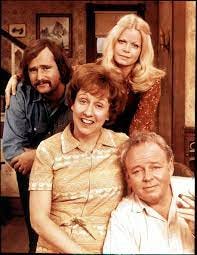
















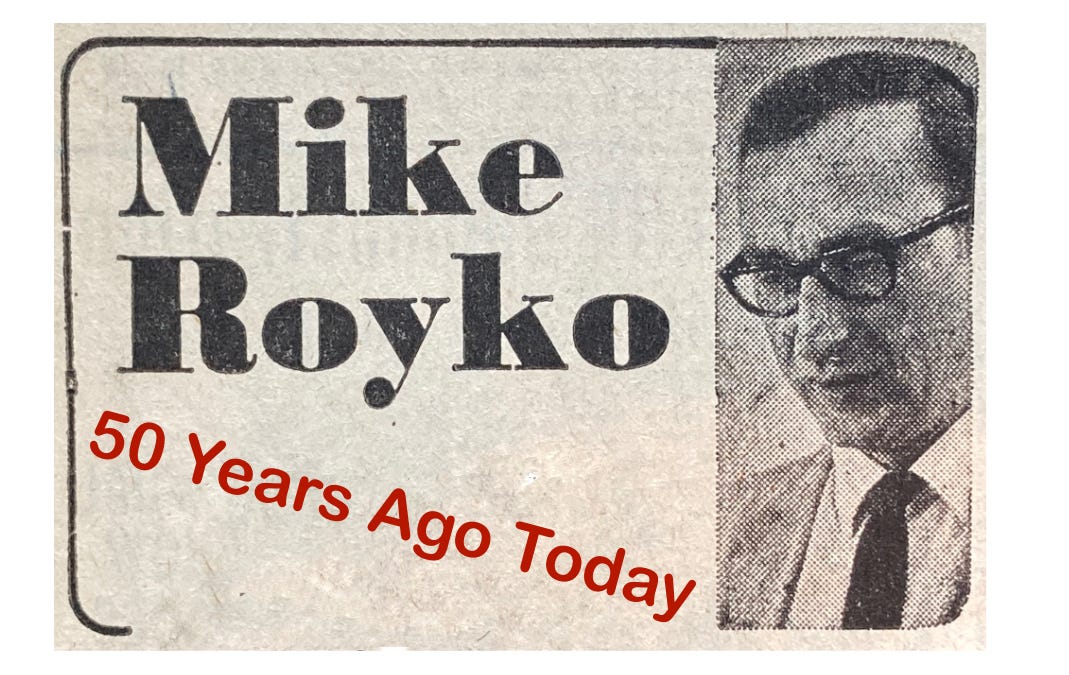




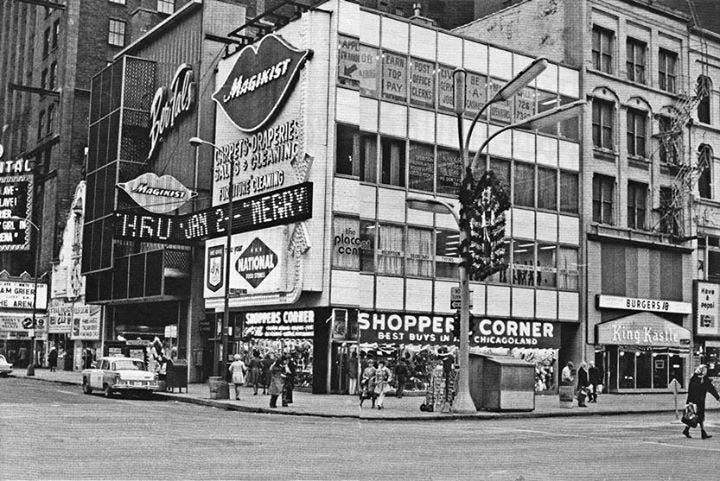



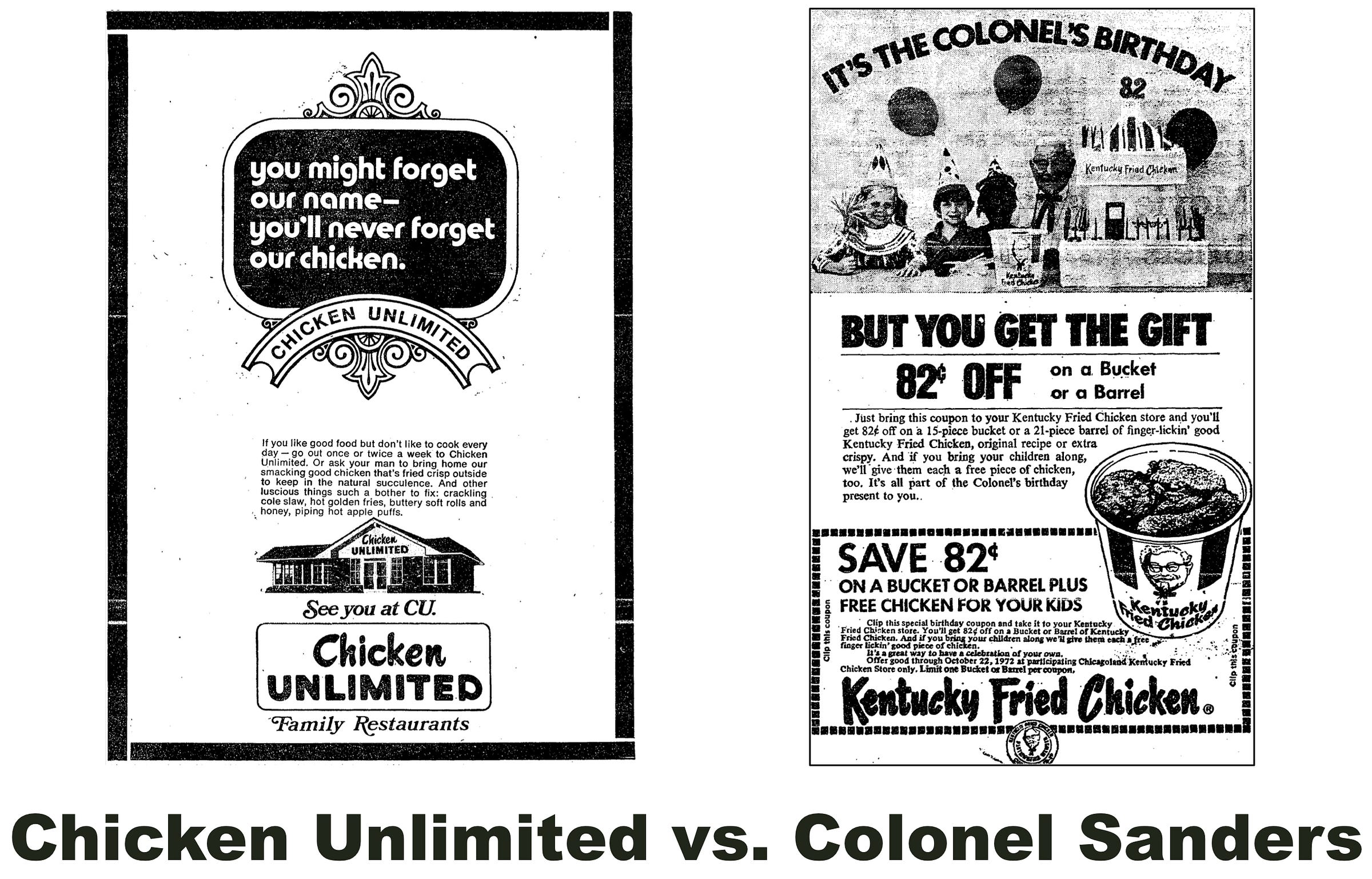






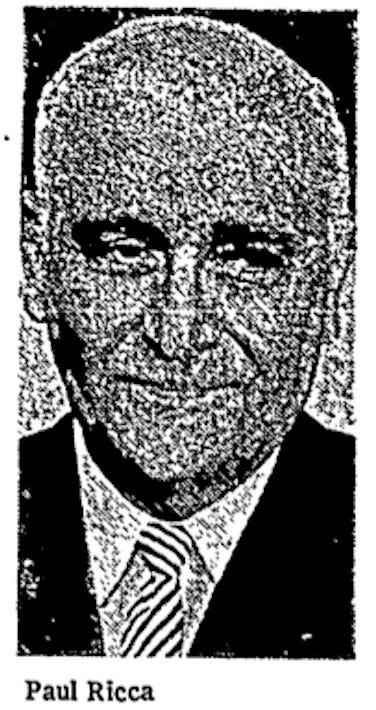


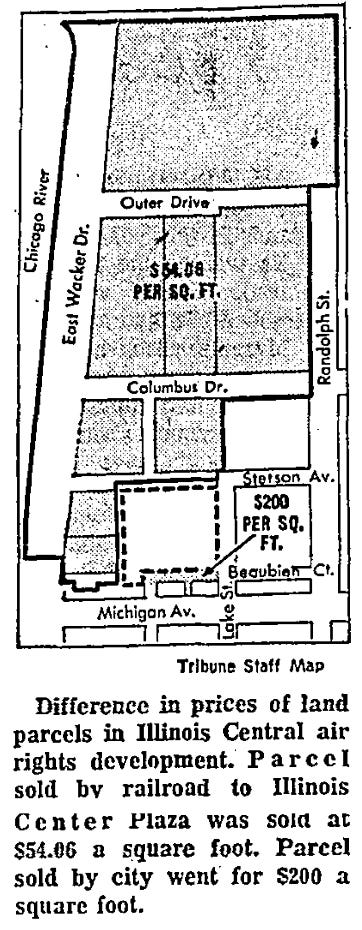






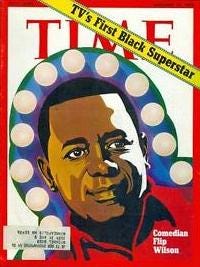






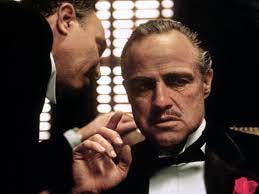

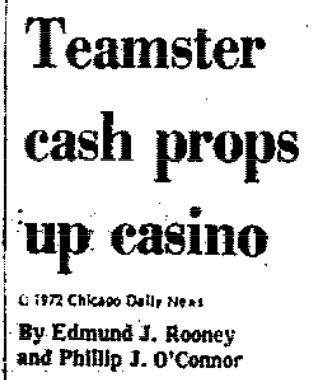



















That was a really young Chuck Goudie narrating the Spilotro story.
I remember when Gattuso & Campise tried to whack Ken Eto.
Walter Jacobson got the 911 call recording, where the pharmacist at the drug store next to the attempted hit site near Grand & Nordica, where Eto somehow survived & crawled to the drug store. The druggist told the 911 call taker that Eto was shot in the head & then the call taker, being a total idiot actually asked to speak to Eto!
After Eto told the FBI who shot him, the FBI went to them & told them they could be protected, but the two of them told the FBI they were safe.
Both were found a couple of weeks later dead in a car trunk in junk yard!
And I should add, both Oscar Goodman & his wife ended up as the mayor of Las Vegas!